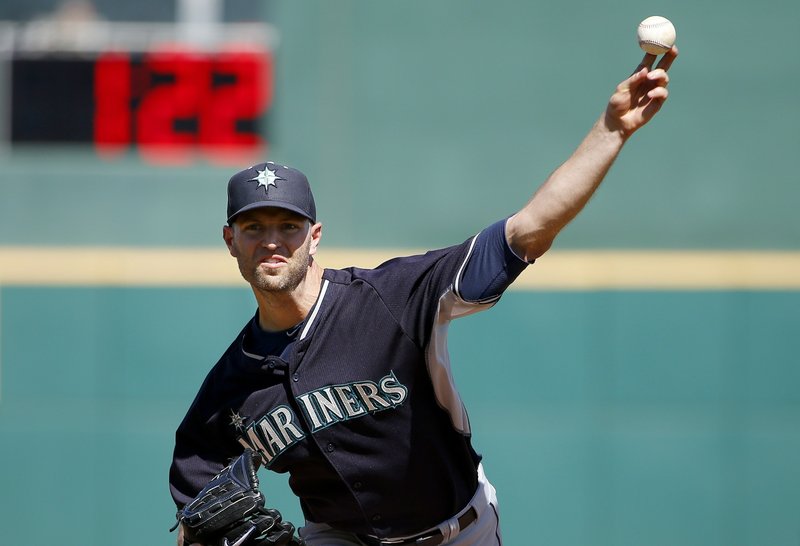NEW YORK -- Major League Baseball and its players are discussing bold changes to spark the sport that include a three-batter minimum before a pitching change except at the start of an inning, a single trade deadline set before the All-Star break and expanded rosters.
The union renewed its push to extend the designated hitter to the National League and suggested amateur draft incentives for winning records and penalties for losing records, among other things.
The talks are an expansion of the ones last offseason in which management threatened to implement a pitch clock, then backed off but did institute limits on mound visits without pitching changes. Management made its proposal on Jan. 14, the union responded last Friday and discussions are ongoing.
Details were disclosed to The Associated Press by people familiar with the negotiations who spoke on condition of anonymity because no statements were authorized. Aspects of the proposals were first reported by The Athletic.
Management is concerned about a drop in offense that saw strikeouts exceed hits for the first time last year and the big league batting average drop to its lowest level since 1972. In a season that included an unusually cold and wet April, average attendance dropped for the third consecutive season and fell below 30,000 for the first time since 2003.
Some of the most interesting changes appear likely to be put off until 2020 at the earliest.
RELIEF PITCHERS
Management proposed that a team not be allowed to bring in a reliever until the previous pitcher has faced three batters or an inning ends. There were 1,145 one-batter outings last season, according to the Elias Sports Bureau, up from 1,119 the previous year but down from 1,182 in 2016. The change would have an impact on the use of "openers" for a few batters, a move pioneered by Tampa Bay Manager Kevin Cash and emulated by Milwaukee Manager Craig Counsell in Game 5 of the NL Championship Series, when he removed left-handed starter Wade Miley after one batter and replaced him with right-hander Brandon Woodruff.
Players countered the change should start in the minor leagues this year and reach the majors in 2020.
DESIGNATED HITTER
The DH has been used in the AL since 1973, but the NL has never adopted the rule and Commissioner Rob Manfred has said he supports the status quo. The union proposed the DH start being used in the NL this year, but management in the past has considered the DH an economic issue, and Manfred has said that economic changes must wait for negotiations for a new labor contract that would start ahead of the 2022 season.
PITCH CLOCKS
Management again has proposed a pitch clock, and the union countered with limitations on its use.
MOUND VISITS
A limit of six mound visits without a pitching change began last season, and management wants to lower that to four this season and three in 2020. The union countered with five this year and, if the average time of a nine-inning game is longer this year than last, then four in 2020.
TRADE DEADLINE
Players proposed a single trade deadline be instituted before the All-Star break to keep teams from dealing veterans when the clubs conclude their chances of a playoff berth have dwindled. The deadline for trades without waivers was June 15 from 1923 through 1985 and has been July 31 since. Players who clear waivers can be dealt after the deadline, but they must be in an organization by Aug. 31 to be eligible for the postseason.
ROSTER SIZE
Many have criticized the roster rules, which generally allow a team 25 active players through Aug. 31 and then 40 until the end of the season. Management proposed allowing a 26-man roster, including a 12-pitcher maximum, through Aug. 31, and then up to 28 for the rest of the season. The union countered that each team should be required to have 28 active from Sept. 1 on and that there be a supplemental roster of four players after the Class AAA postseason ends. No starting pitchers would be allowed on the supplemental roster, and at least two of the four would have to be position players.
Other concerns include tanking (players say teams with 90 or more losses in consecutive seasons should be penalized), service time (award-winning players in their debut seasons would receive a full year of major league service), possibly lowering the pitcher's mound, shortening inning breaks and expanding playoffs.
Sports on 02/07/2019
